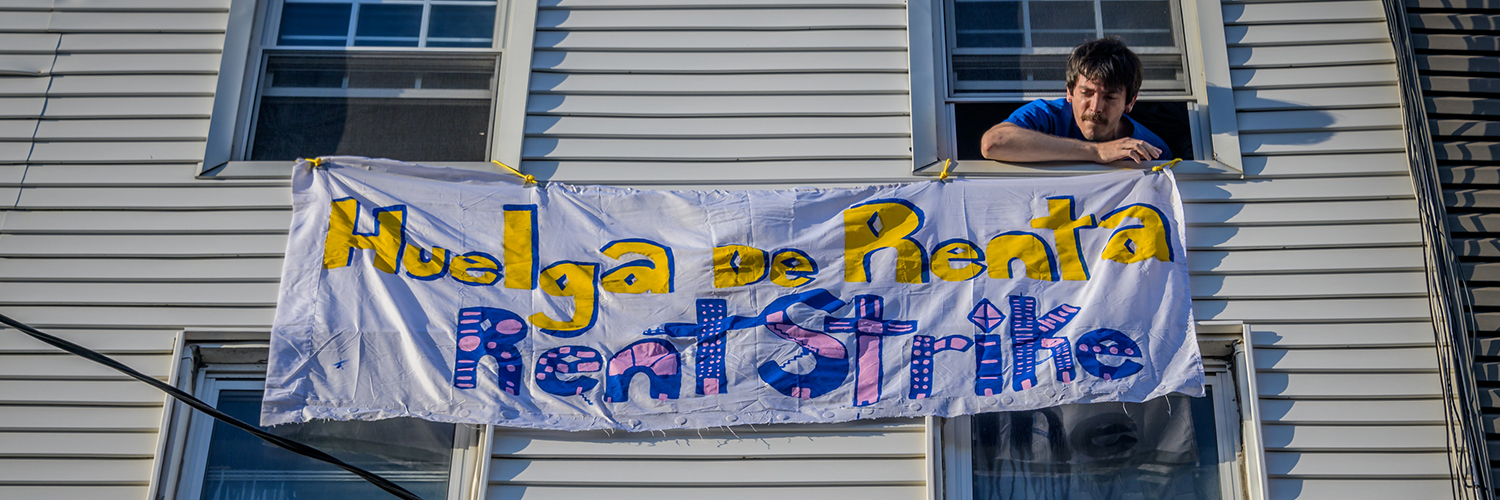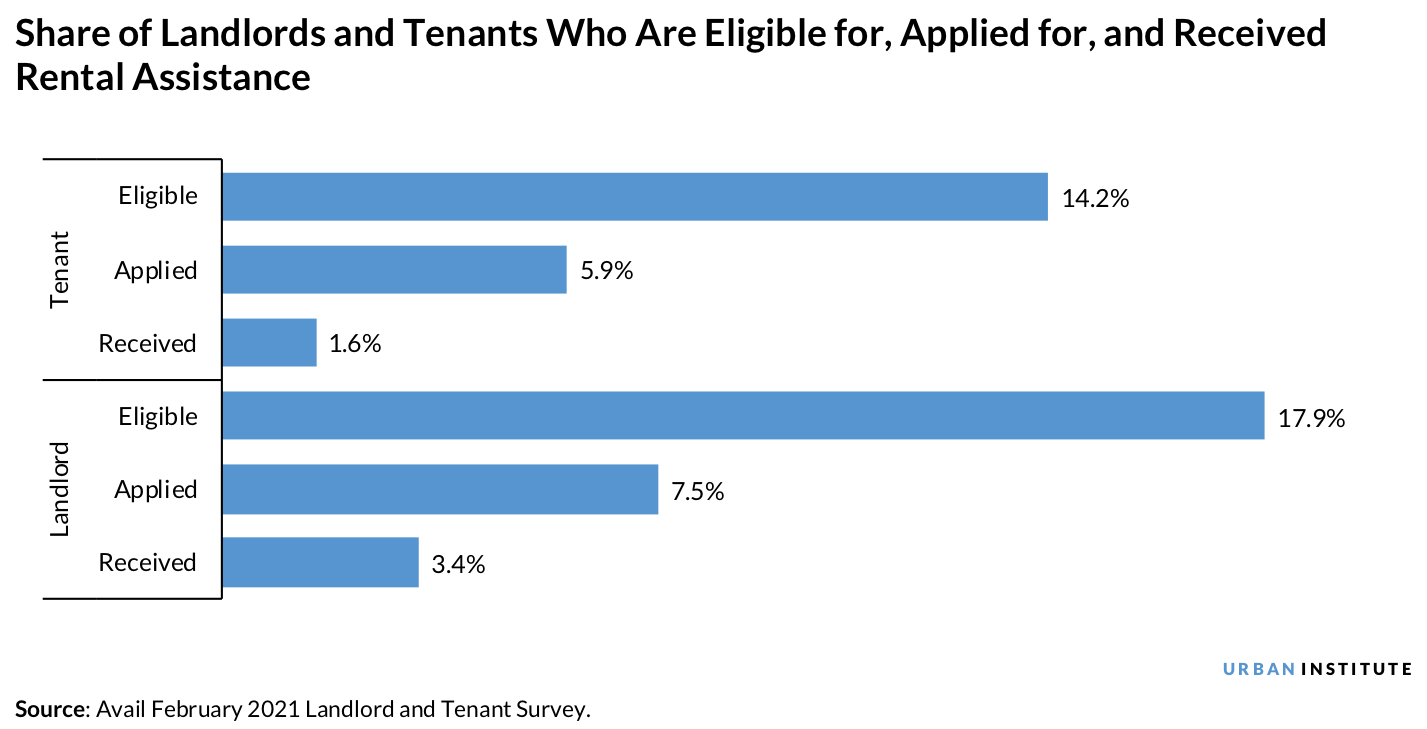
To keep renting families housed during the pandemic, the federal government has enacted emergency rental assistance and a national eviction moratorium through the end of March. But for these protections to work, landlords and tenants must take certain steps.
The $25 billion rental assistance program passed in December requires landlords (with tenants’ approval) or tenants themselves to apply for assistance. The eviction moratorium requires both the landlord and the tenant to know the moratorium is in place.
We fear that these policies will not be as effective as they could be because too few mom-and-pop landlords and their tenants are aware of them.
A recent survey confirms these fears. Avail, a platform that helps do-it-yourself mom-and-pop landlords manage their units, screen tenants, and collect rent, periodically surveys its landlords and tenants. We worked with Avail to develop questions for its February survey to understand landlords’ and tenants’ awareness of rental assistance and eviction moratorium policies. More than 1,200 landlords and 2,500 tenants responded.
The results show most landlords and tenants that Avail serves—who own or live in one-to-four-unit rental properties—were unaware of rental assistance, and most tenants do not know about the eviction moratorium extension, highlighting the need for greater outreach.
Fewer than half of landlords and fewer than a third of tenants knew about rental assistance
Landlords were more aware of federal rental assistance than their tenants, but even among landlords, awareness was modest. Almost half (48 percent) were aware of government-sponsored rental assistance, compared with 31 percent of tenants.
There were few differences in landlord or tenant awareness by race, ethnicity, or income, although tenants who earned more than $100,000 a year had somewhat higher awareness—38 percent knew about the assistance—than those with lower incomes.
Interestingly, landlords who have experienced rental income losses were more likely to know about the assistance, but tenants with challenges paying rent were less likely to know about the assistance, suggesting the information is not reaching the tenants who are in most need.

Among landlords with rental assistance knowledge, 37 percent stated they were eligible. A lower share of tenants knew about rental assistance, but among those who did, a higher share (46 percent) reported being eligible.
Of those eligible, an equal share of landlords and tenants applied (42 percent among those who are eligible, or 7.5 percent of all landlords and 5.9 percent of all tenants). Among those eligible, a greater percentage of Black and Hispanic landlords and tenants applied for assistance than white landlords and tenants. Survey data show 13.1 percent of Black landlords, 14.3 percent of Hispanic landlords, and 4.7 percent of white landlords applied for rental assistance, and 9.3 percent of Black tenants, 5.8 percent of Hispanic tenants, and 4.3 percent of white tenants applied. Just over 3 percent of landlords and less than 2 percent of tenants said they were currently receiving rental assistance.

Two disturbing facts emerge from this analysis: low overall awareness and low application rates even among those who see themselves as eligible. Even the landlords and tenants who applied expressed that finding assistance and uncertainty about whether they would receive assistance were major barriers. The lack of awareness of the program plus the lack of applications on the part of eligible landlords and tenants indicates adequate funding may not reach those in need.
My tenant was able to access rental assistance and the rent is now up to date, but [I’m] not sure about 2021 job security. The other issue was having to wait over two months to find out if he was approved or not. Lots of uncertainty with [these] programs because they depend on government funding.
– Landlord in Illinois
Most landlords know about the eviction moratorium, but fewer than half of tenants do
Similar to our findings on rental assistance, landlords’ awareness of the eviction moratorium extension was higher than tenants’, but the absolute level of awareness of this policy was much higher. About 84 percent of landlords knew that the Centers for Disease Control and Prevention’s national eviction moratorium had been extended, compared with just 47 percent of tenants.
Although differences across race and ethnicity were small, we found significant differences in eviction moratorium awareness by tenant household income. Awareness increased with income, with 39 percent of those making less than $25,000 a year aware of the extension, compared with 69 percent of those making $100,000 or more.
Additionally, landlords who experienced rental income losses were more likely to be aware of the extension, but tenants who have faced financial challenges during the pandemic were less likely.

More outreach could enhance awareness
I was completely unaware that any type of rental assistance was available, and that would have been very useful information.
– Tenant in Missouri
Financial pains for both tenants and mom-and-pop landlords are increasing as the pandemic lingers. As back rent due and lost rental income mount, faster distribution of rental assistance will be critical to alleviate those pains.
The first step is to let tenants and landlords know about the policies in place. Our survey reveals that even though policies to keep renters in their homes have been implemented, they have not been well communicated, with most landlords and tenants not familiar with the programs designed to support them.
It is especially concerning that the tenants most in need are less aware of both rental assistance and the eviction moratorium extension, which increases their possibility of eviction without having an opportunity to exercise their rights. More outreach is critical to ensure that both renters and landlords are aware of their options.
Tune in and subscribe today.
The Urban Institute podcast, Evidence in Action, inspires changemakers to lead with evidence and act with equity. Cohosted by Urban President Sarah Rosen Wartell and Executive Vice President Kimberlyn Leary, every episode features in-depth discussions with experts and leaders on topics ranging from how to advance equity, to designing innovative solutions that achieve community impact, to what it means to practice evidence-based leadership.